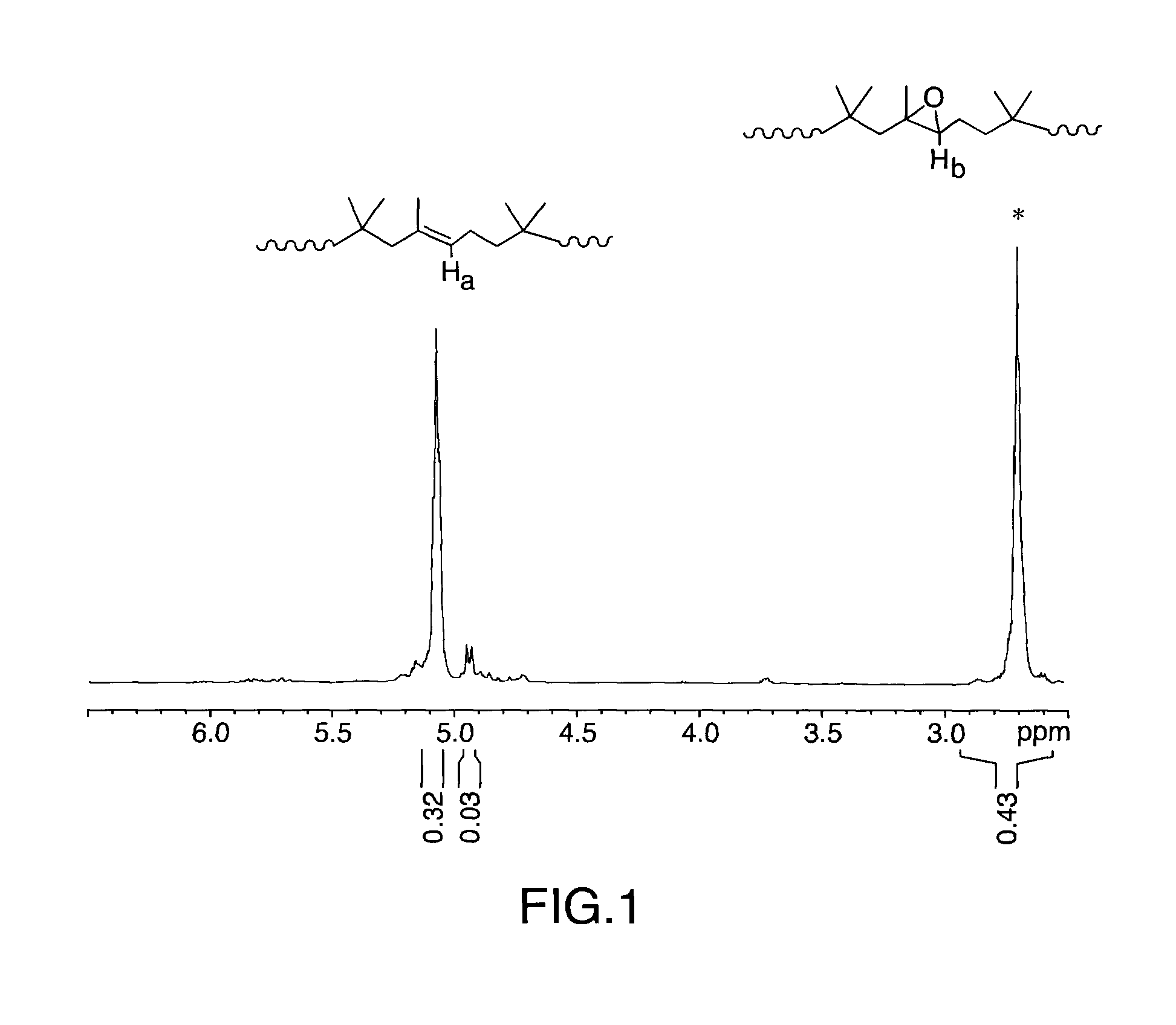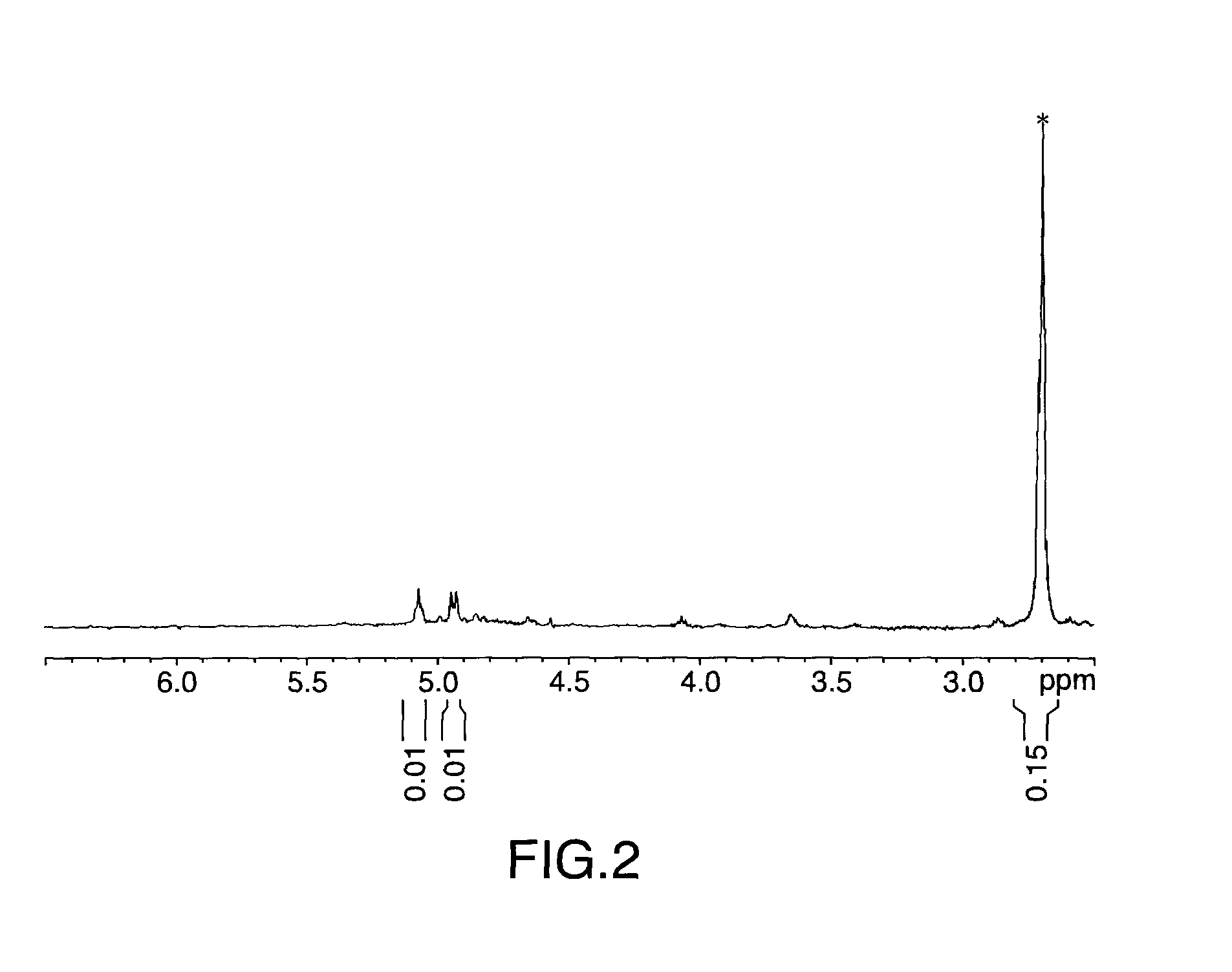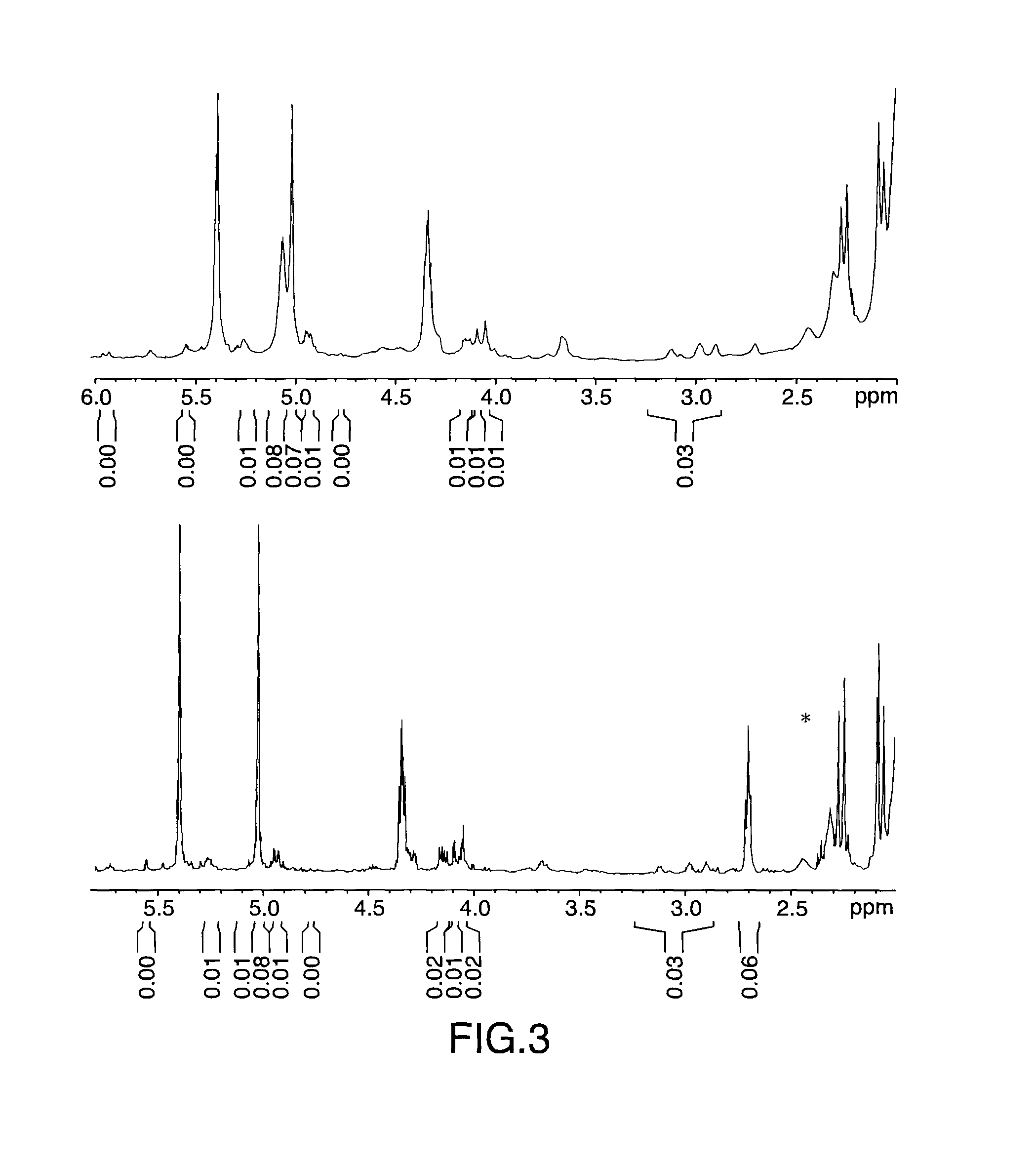Processes for preparing epoxidized polymers
- Summary
- Abstract
- Description
- Claims
- Application Information
AI Technical Summary
Benefits of technology
Problems solved by technology
Method used
Image
Examples
example 1
Epoxidation of Regular Butyl (LANXESS Butyl 301)
[0076]The epoxidation experiment was carried out in a batch process in a fully baffled 5 L round bottom flask. The 3-necked top lid was connected to an overhead mechanical stirrer using a glass stir rod and a Teflon paddle, and a water cooled reflux condenser. 100 g (0.0299 mol of C═C) of LANXESS Butyl 301 (1.85 mol % unsaturation) sample was cut into small pieces and dissolved in 2 L of hexane to produce a rubber solution of approx. 7 wt % solid. The butyl solution was then subjected to centrifugation (15,000 rpm) to remove foreign materials prior to use. Prior to adding the butyl polymer hexane solution to the reaction flask, 111.5 g (0.99 mol) of H2O2 (30 wt % aqueous solution) was allowed to react with 25 g (ca. 0.1175 mol of SO3H) of Amberlyst 15 at room temperature for 10-15 minutes. The butyl polymer hexane solution was then added to this mixture and allowed to react at 60° C. via a temperature controlled oil bath with periodic ...
example 2
Epoxidation of High Isoprene Butyl Rubber Via Process of the Present Invention
[0078]Same experimental set up as in Example 1. 100 g (0.1196 mol of C═C) of the high isoprene butyl rubber (7.46 mol % unsaturation) sample was cut into small pieces and dissolved in 2 L of hexane to produce a rubber solution of approx. 7 wt % solid. The butyl solution was then subjected to centrifugation (15,000 rpm) to remove foreign materials prior to use. Prior to adding the butyl polymer hexane solution to the reaction flask, 111.5 g (0.99 mol) of H2O2 (30 wt % aqueous solution) was allowed to react with 25 g (ca. 0.1175 mol of SO3H) of Amberlyst 15 at room temperature for 10-15 minutes. The butyl polymer hexane solution was then added to this mixture and allowed to react at 60° C. via a temperature controlled oil bath with periodic sampling to monitor the reaction progress. The work up procedure was the same as in Example 1.
[0079]The resulting sample was analyzed by 1H-NMR and GPC.
example 3
Preparation of Epoxidized Bromobutyl by Epoxidation of Bromobutyl Rubber (LANXESS Bromobutyl 2030) Via Process of the Present Invention
[0080]Same experimental set up as in Example 1. 42 g (0.0116 mol of C═C) of LANXESS Bromobutyl 2030 sample (0.72 mol % unsauration) was cut into small pieces and dissolved in 600 mL of hexane to produce a rubber solution of approx. 9.5 wt % solid. The butyl solution was then subjected to centrifugation (15,000 rpm) to remove foreign materials prior to use. Prior to adding the butyl polymer hexane solution to the reaction flask, 3.5 g (0.0311 mol) of H2O2 (30 wt % aqueous solution) was allowed to react with 10 g (ca. 0.0470 mol) of Amberlyst 15 at room temperature for 10-15 minutes. The butyl polymer hexane solution was then added to this mixture and allowed to react at 60° C. via a temperature controlled oil bath with periodic sampling to monitor the reaction progress. The work up procedure was the same as in Example 1.
[0081]The resulting sample was ...
PUM
| Property | Measurement | Unit |
|---|---|---|
| Temperature | aaaaa | aaaaa |
| Temperature | aaaaa | aaaaa |
Abstract
Description
Claims
Application Information
 Login to View More
Login to View More - R&D
- Intellectual Property
- Life Sciences
- Materials
- Tech Scout
- Unparalleled Data Quality
- Higher Quality Content
- 60% Fewer Hallucinations
Browse by: Latest US Patents, China's latest patents, Technical Efficacy Thesaurus, Application Domain, Technology Topic, Popular Technical Reports.
© 2025 PatSnap. All rights reserved.Legal|Privacy policy|Modern Slavery Act Transparency Statement|Sitemap|About US| Contact US: help@patsnap.com



